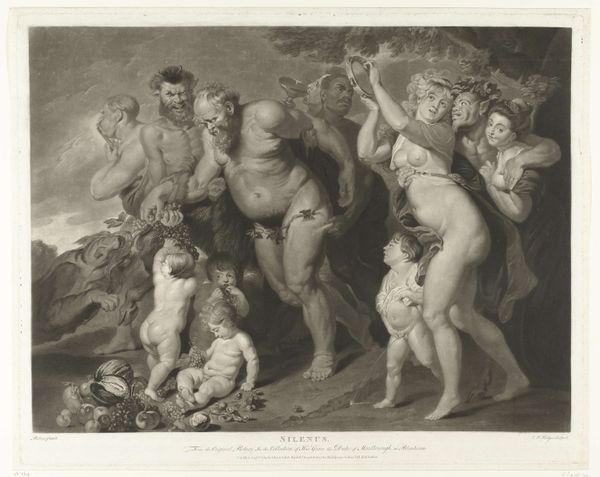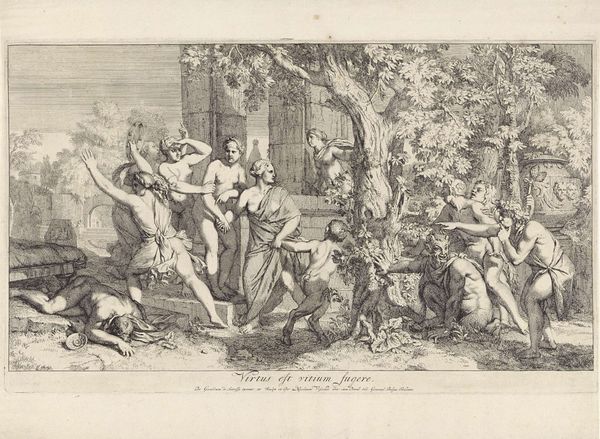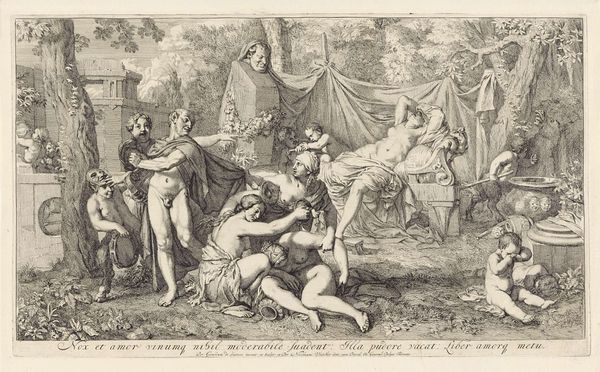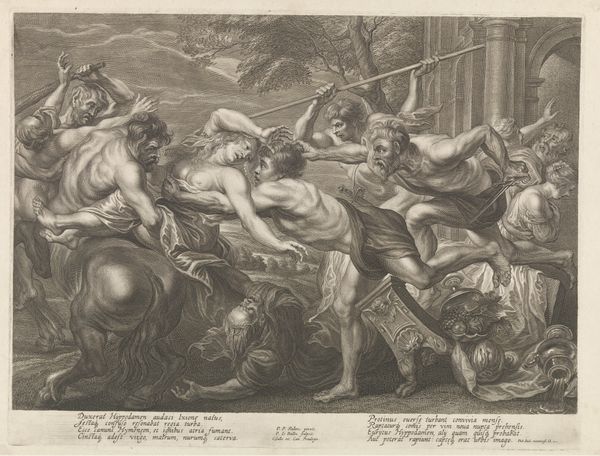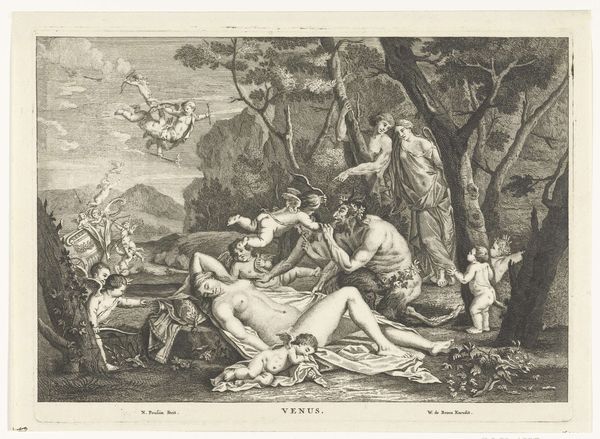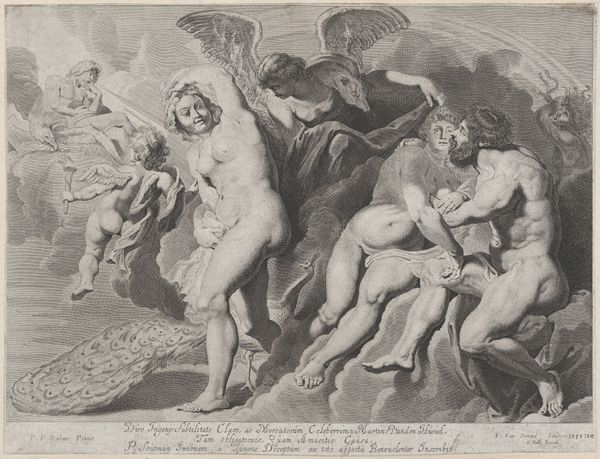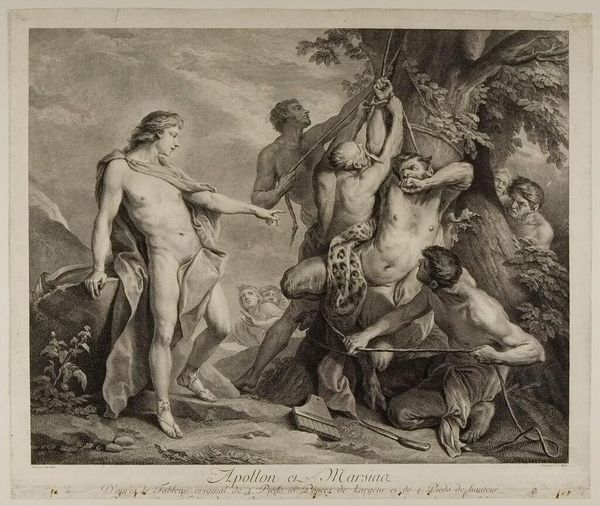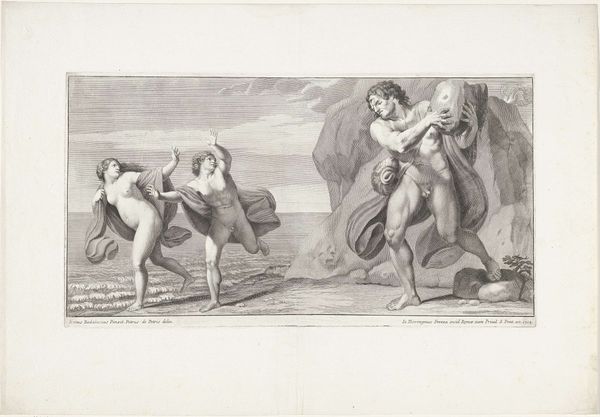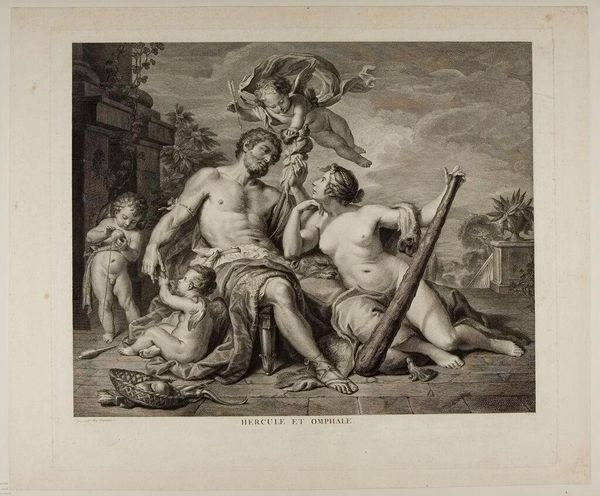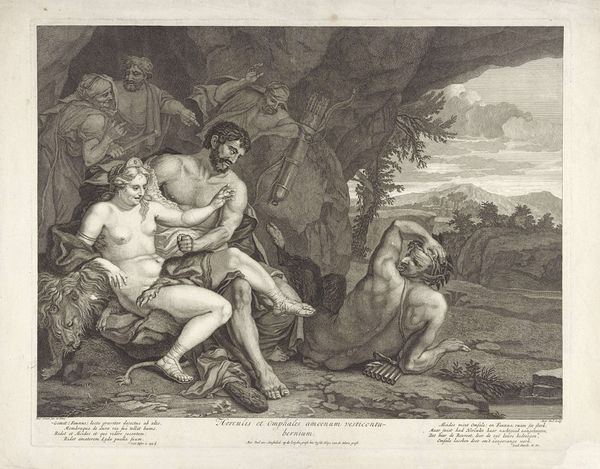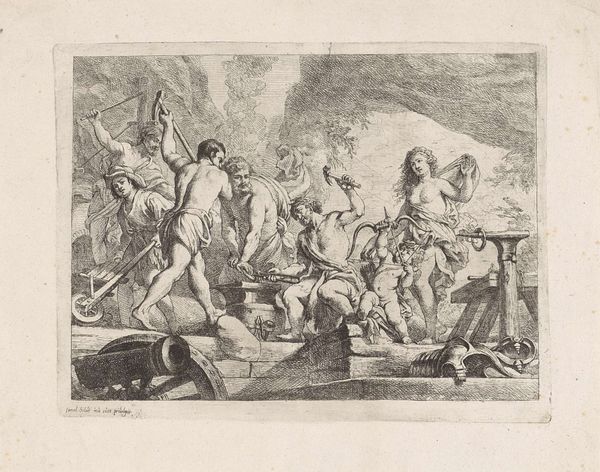
Dimensions: height 420 mm, width 449 mm
Copyright: Rijks Museum: Open Domain
Curator: Here we have Francesco Bartolozzi’s engraving, “Orlando relieves Olympia from the Orca in the land Ebuda,” which sources its imagery from between 1738 and 1815. Editor: It’s arresting! All these bodies crammed together, a chaotic jumble. The textures in the foreground really draw the eye to the woman bound on the seamonster. Curator: Bartolozzi was known for his stipple engraving technique. Note how he employs fine dots to create shading, particularly in rendering flesh and drapery. This adds softness and volume to the figures, compared to traditional line engraving. Editor: Right, the soft shading lends a certain romantic sensibility, which works against the violent scene. It's an interesting contradiction. Orcas were understood very differently then, clearly. Tell me about Orlando and Olympia— Curator: The scene is an episode extracted from Ludovico Ariosto’s epic poem “Orlando Furioso.” It represents Orlando rescuing Olympia from sacrifice to a sea monster, a common trope echoing Perseus and Andromeda. It also touches on societal fears about female vulnerability and the heroic ideal of masculine intervention. Editor: The engraving reduces this to a fairly simple binary though, doesn't it? Strong man saves vulnerable woman. The orca itself becomes this brutish, almost unknowable threat. In 1738, I wonder how this tale of rescue reinforced specific ideas of power and gender? Curator: It’s a window into that period’s visual culture, the narrative preferences and how artists employed allegories. But there are underlying myths. These motifs continually re-emerge because the dynamic speaks to ingrained archetypes within our collective unconscious. Editor: Even today. Looking at this engraving has definitely illuminated some uncomfortable cultural baggage for me! Curator: And it suggests the images that grip us transcend singular time and space.
Comments
No comments
Be the first to comment and join the conversation on the ultimate creative platform.

